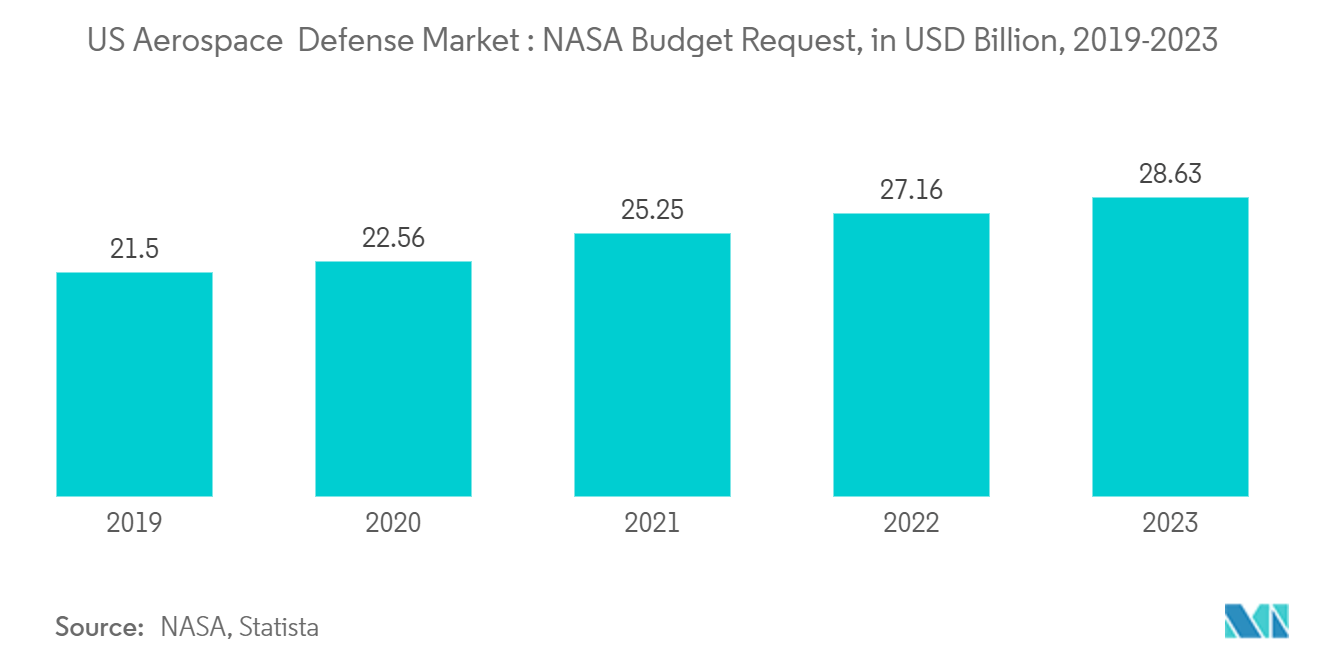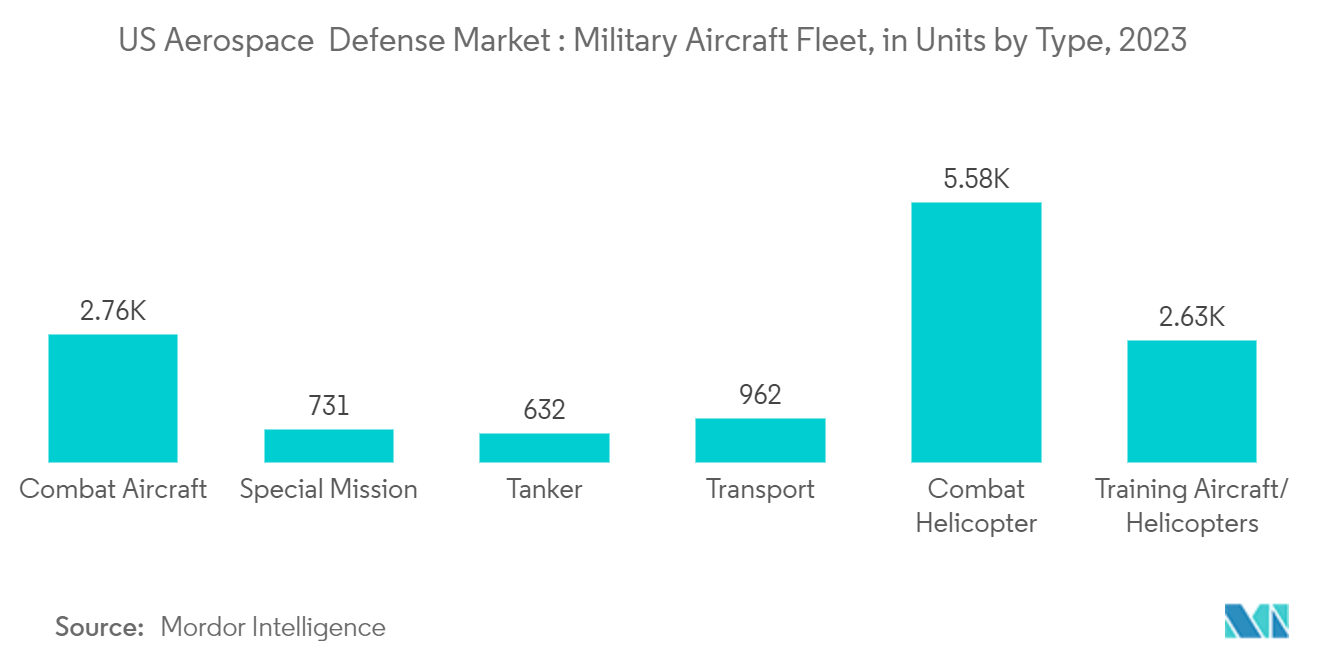Market Trends of United States Aerospace And Defense Industry
The Space Sector is Expected to Witness the Highest Growth During the Forecast Period
Space capabilities give the US and its allies unprecedented advantages in national decision-making, military operations, and homeland security. While a handful of private companies have driven the most recent space exploration efforts, there are ongoing discussions for establishing the Space Force as the sixth US military branch.
The US satellite manufacturing and launch industry is a rapidly evolving industry that plays a critical role in the country's space exploration and national security efforts. In recent years, this industry has undergone significant changes due to technological advancements, increasing demand for satellite services, and the presence of various prominent players. The demand for new satellite launches is driven by the need for various satellite services, such as providing low-latency internet access from space. In April 2022, Kuiper Systems LLC, a subsidiary of Amazon, announced that it had received approval from the Federal Communications Commission to launch 1,500 satellites by 2026. The company plans to reach 3,236 satellites by 2029, offering broadband internet services worldwide. The company secured around 83 launch services from Blue Origin, Arianespace, and United Launch Alliance (ULA) to launch these satellites.
The US Space Command will likely benefit the US Department of Defense (DoD) and the US aerospace and defense industry. The US Space Command, which oversees space operations using personnel and assets managed by the Space Force, will likely support A&D companies in accelerating investments in innovative technologies and capabilities. Thus, growing spending on space research and development and an increasing number of satellite launches drive market growth across the country.

The Air Force is Expected to Showcase Remarkable Growth During the Forecast Period
The US Air Force is equipped with the most modern technology that provides air support for land and naval forces and aids the troops on and around a battlefield. The Air Force continues developing and procuring next-generation aircraft to meet the demands of significant power conflicts with Russia and China. The US Air Force comprises 13,247 operational, reserve, and out-of-service aircraft. The country’s diplomatic and military relations with nations such as Japan and Taiwan have compelled it to drive significant investments into increasing the fleet of aircraft to counter any provocative military action from China successfully.
The US involvement in the military conflict in the Middle East majorly drove its procurement of attack aircraft and transport aircraft. The Department of Air Force proposed a budget request of USD 194 billion for FY 2023, an increase of USD 20.2 billion or 11.7% from the FY 2022 budget request. For instance, in May 2023, it was announced that the US Air Force intends to award a contract in 2024 for its sixth-generation fighter jet as it races to retain its edge against rapid advances in Chinese military technology. The country’s defense agencies have been on a spree of procurements given the Russia-Ukraine War that drove significant US weapon supply to Ukraine.
The Air Force has successfully implemented several procurement plans to tackle any Russian threat. Owing to significant procurement initiatives, together with the future-ready plans of the USAF, the demand in the Air Force is expected to register a substantial growth rate during the forecast period.


